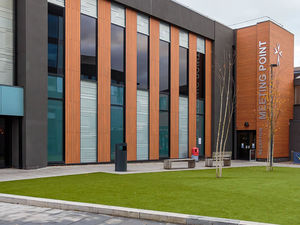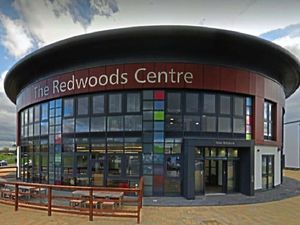Shropshire hospital patient in four-and-a-half hour A&E ambulance wait
A patient was forced to wait during an ambulance handover to a hospital A&E department of more than four-and-a-half hours, figures released today reveal.

Figures show that the longest delay was four hours and 31 minutes outside Royal Shrewsbury Hospital and three hours and one minute outside Telford's Princess Royal Hospital.
The average time for a crew to complete a patient handover and be ready to respond to the next call at PRH was 34 minutes and 42 minutes at RSH.
National targets state that patient handovers should be completed within 15 minutes of arrival at a hospital and the vehicle must be ready to respond to the next call 15 minutes after.
The delays being experienced by paramedics will be discussed at a Shropshire Council health and adult social care scrutiny committee meeting in Shrewsbury on Monday.
Claire Brown, of West Midlands Ambulance Service, said: "Shrewsbury and Telford Hospital NHS Trust accounts for over a quarter of all hospital handover delays we experience across the West Midlands region.
"Like our own staff, the team in the hospital are working incredibly hard to provide the very highest standards of patient care despite the unprecedented level of demand which both organisations are experiencing.
"Only around a third of patients attending A&E arrive by ambulance so at times of peak demand, handover delays do occur.
"Every time one of our crews is delayed, it has a significant knock-on effect on our ability to respond to 999 calls in a timely manner, which puts patients at risk.
"We will continue to work closely with the acute trust to improve the handover times."
Hospital bosses have admitted there are problems with patient handovers from ambulances, with rocketing attendances at A&E blamed.
Debbie Kadum, of the Shrewsbury and Telford NHS Trust, said: "We completely accept that, in terms of patient handover, we are not in the place that we want to be.
"The NHS, both nationally and locally, continues to see a big increase in demand. About 50 per cent of patients brought into our emergency departments by ambulance need to be admitted for further care.
"We're working to ensure the remaining patients who don't need to be admitted are taken to the most appropriate place to be seen or treated.
"This is an issue not just for us at SaTH, or for our partners in the ambulance services, but for the whole health economy."
Meanwhile Shropshire's A&E departments are still struggling to meet targets.
Pressure on bed places in both PRH and RSH has led to patients being cared for in places like corridors.





